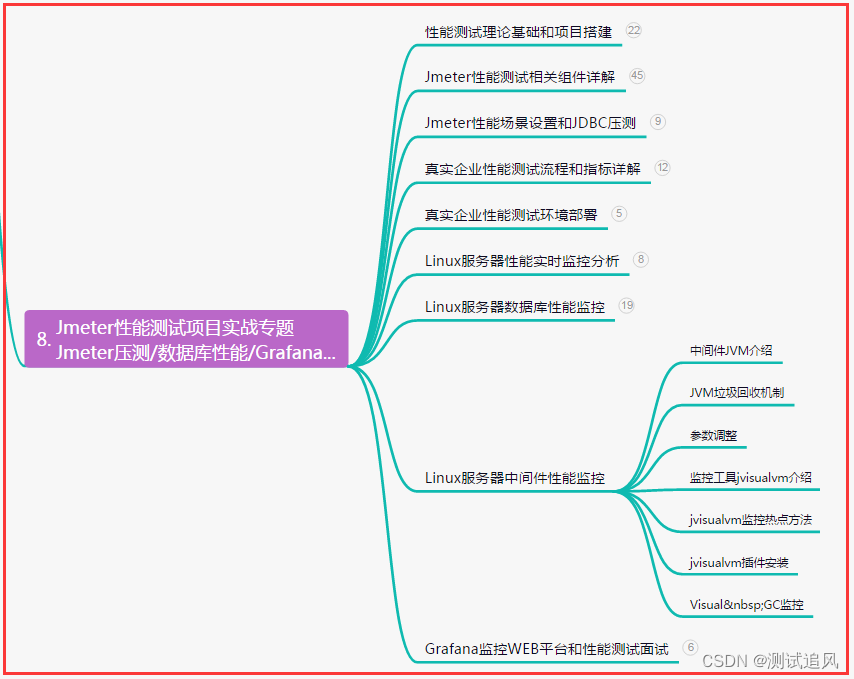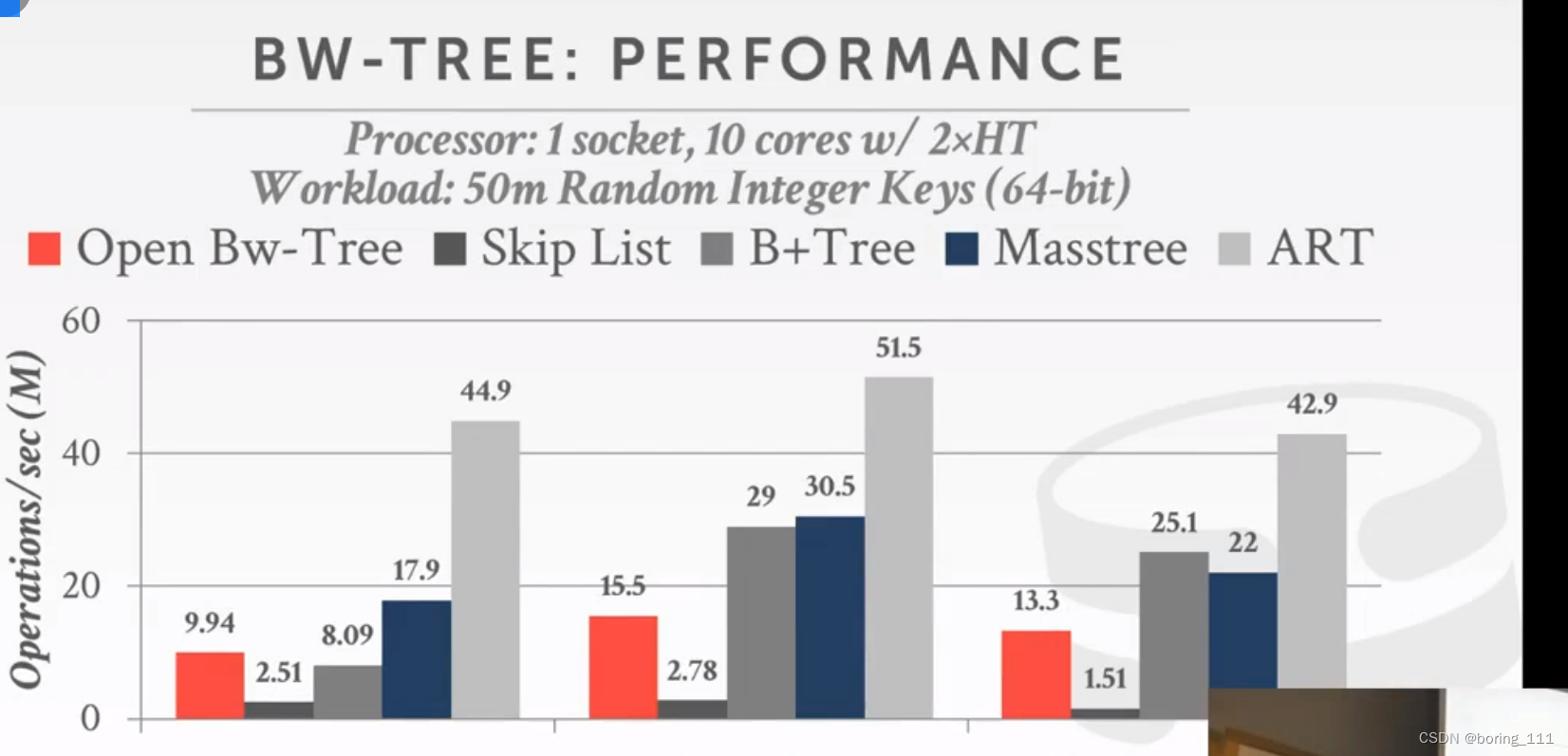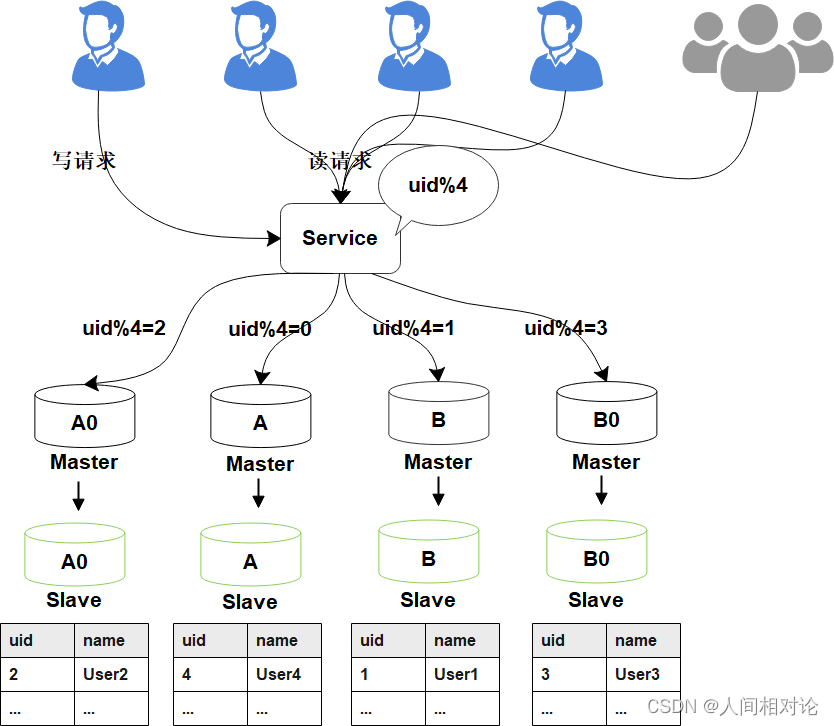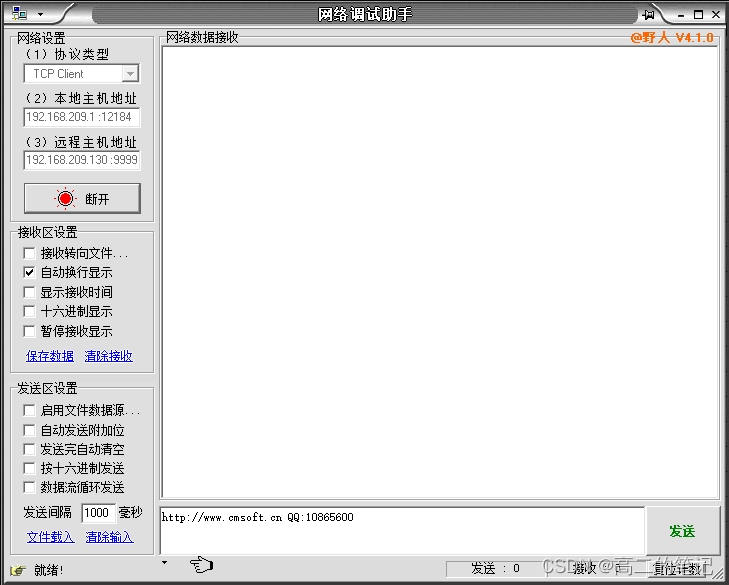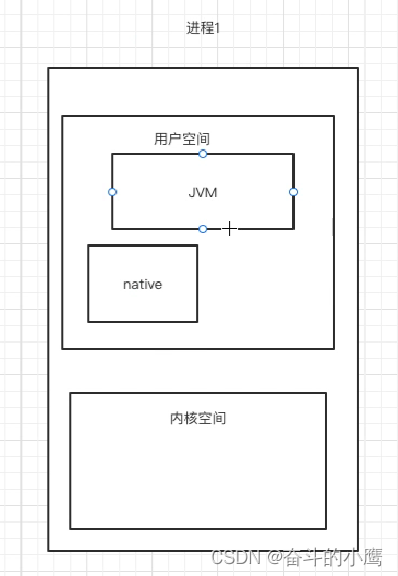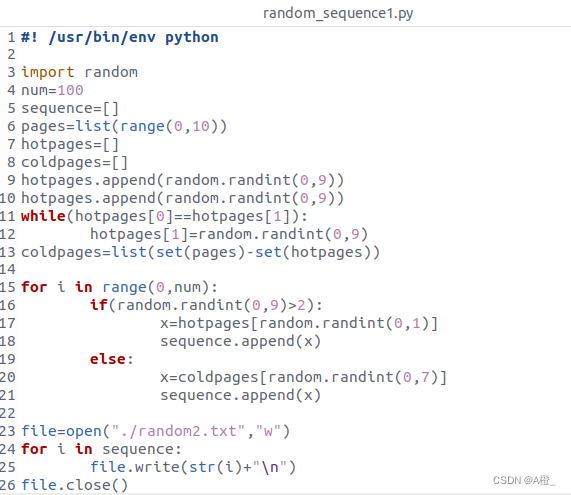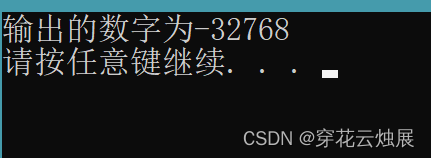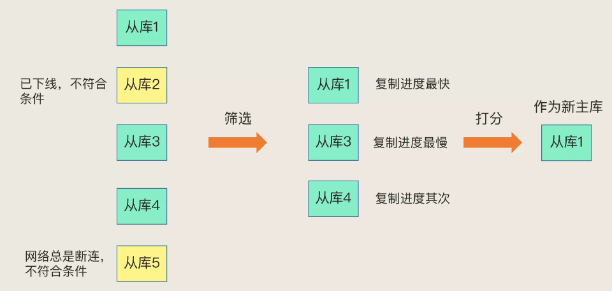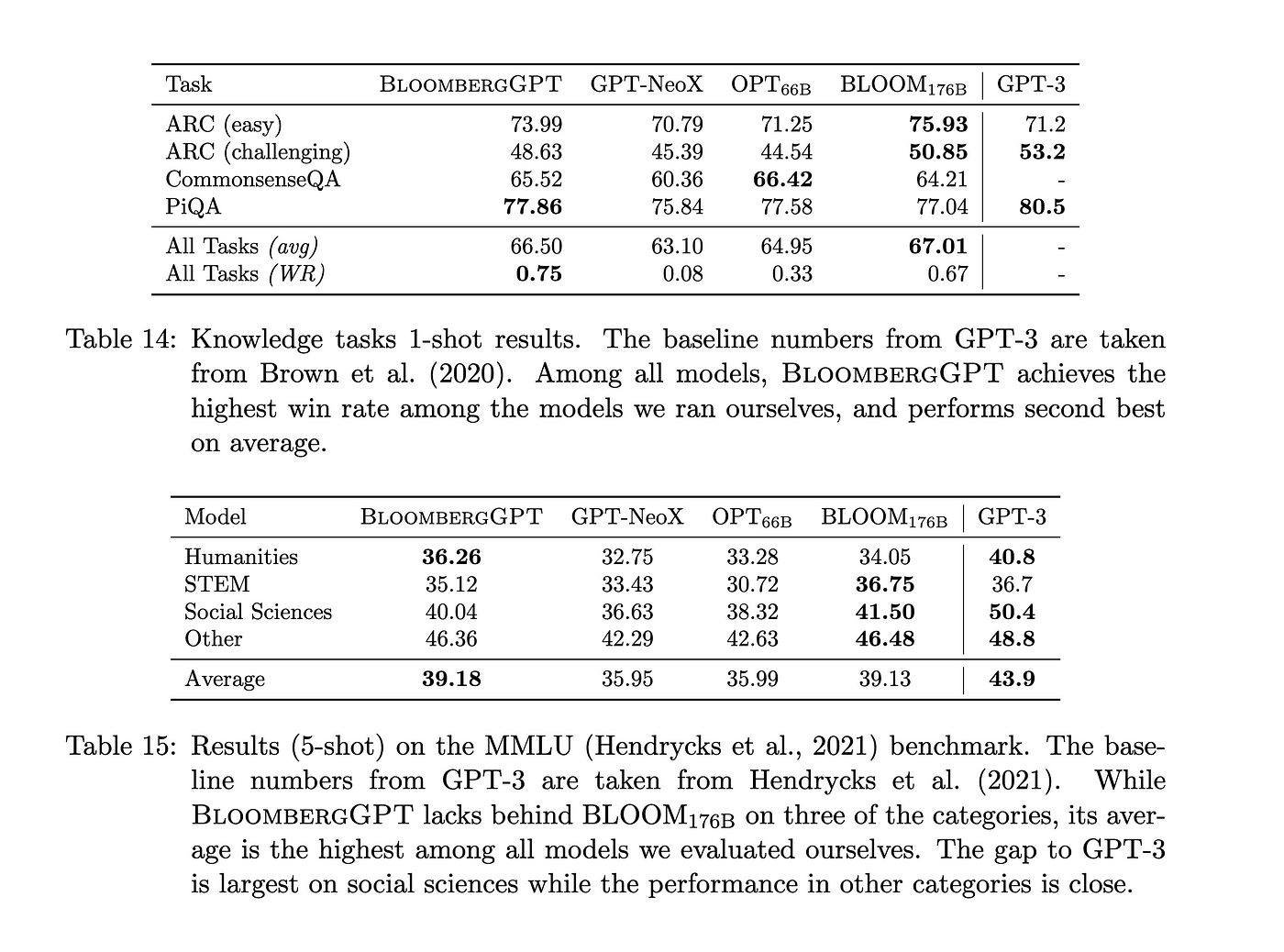在网上看了好多解析JPEG图片的文章,多多少少都有问题,下面是我参考过的文章链接:
首先,解析的步骤
- 1.读取文件的信息
- 2.Huffman编码解码
- 3.直流交流编码解析
- 然而,读取多少个8×8矩阵才能解析出一个MCU呢?
- 4.反量化
- 5.反Zig-Zag变化
- 6.反DCT变化
- 8.YCbCr转RGB
- 效果图
1.读取文件的信息
JPEG格式中信息是以段(数据结构)来存储的。
段的格式如下
| 名称 | 字节数 | 数据 | 说明 |
|---|---|---|---|
| 段标识 | 1 | FF | 每个新段的开始标识 |
| 段类型 | 1 | 类型编码(称作“标记码”) | |
| 段长度 | 2 | 包括段内容和段长度本身,不包括段标识和段类型 | |
| 段内容 | ≤65533字节 |
其余具体信息请见以下链接,我就不当复读机了。
JPEG标记的说明
格式介绍
值得注意的一点是一个字节的高位在左边,而且直流分量重置标记一共有8个,其他的格式说明在第二个链接中已经足够详细了
这些段中必须要读取的段:SOS, DHT, DQT, SOF, DRI,其他的只是锦上添花
这里面可能会出现多个SOF段,我们需要拿到这几个段中图片高度和宽度的最大值,和YCbCr的水平,垂直采样因子的最大值分别记为Hmax,Vmax,之后会用到
DRI中的开始间隔指的就是直流分量重置间隔,我们记为reset
2.Huffman编码解码
首先Huffman编码分直流表(DC)和交流表(AC),他们一般各自有两张表,具体使用哪张表是通过SOS里面的对应关系来的,一般Y对应第一张表,CbCr对应第二、三张表。
因为规定huffman编码最多16位,所以huffman编码的最大值位65535
以下代码为我的解码方式,直流交流均如此
int curPos = 16, curCode = 0;
for (int i = 0; i < 16; i++) {
int count = temp[i];//count为二进制位数为i+1的个数
curCode <<= 1; //curCode为当前huffman编码数值
while (count--) { //一次循环生成一个
uint16_t code=curCode;
uint8_t bit=i+1;//比特位有几位 00为2位
uint8_t weight=temp[curPos];//权重是按照顺序排列的,如比特位为两位的编码有两个,设为00,01,后面权重排列为1,2,则00对应1,01对应2
pair<uint8_t, uint8_t> t1(bit,weight);
//<code,<bit,weight>
pair<uint16_t, pair<uint8_t, uint8_t>> t2(curCode,t1);
table.insert(t2);
curCode++;
curPos++;
}
}
3.直流交流编码解析
SOS段之后就是真正的图片压缩数据了,可以选择一次性读取到内存中,也可以边读数据边做后面的解析步骤,我是选择了第二种。每读取一个MCU后做一次解析(我使用的是缓存队列)。在图片编码的时候需要划分MCU(最小编码单位),每个MCU由多个8×8矩阵组成,通过编码将二维数组转换为一维的,所以当读取的数据达到了64个,就代表一个8×8的块解析完成,直到读取到0xFFD9结束
然而,读取多少个8×8矩阵才能解析出一个MCU呢?
MCU里面的8×8矩阵个数,如果从编码角度来说的话,8×8矩阵个数是Hmax*Vmax个,但是从解码角度来说,因为此时的YCbCr已经分开成为了三张表,所以8×8矩阵个数应该是三个分量的水平、垂直采样因子的乘积之和(先乘积,再求和)记为SUMmcu,所以读取一次要读取SUMmcu个8×8矩阵(此时这里面有YCbCr三种表,之后通过公式将YCbCr转换为RGB数值)
好了,到这里我们知道了要读取多少个8×8的矩阵 (实际上,因为没有反Zig-Zag编码,此时还是有64个数据的一维数组)
接下来开始解析,解析需要使用上一步解码出来的Huffman编码。
解析方式如下:
1、对于直流(差分编码),按照一个比特位来读取图片压缩数据,若在Huffman表中发现该编码,并且位数相等,则读取该编码所对应的权重,该权重代表接下来读取多少个比特位作为直流分量的值,你以为这就完了?还要加上差分矫正变量 (YCbCr每张表都有一个,所以一共有3个)。
2、对于交流(游程编码),其他部分都一样(这个没有差分矫正变量),不同的地方举个例子,设读取的直流分量为0x37,则低4位(这里为7)代表接下来7个比特位是该交流分量的值,而高4位(此处为3)代表此交流分量前有3个0 (这里就不用加上前面的了)。注意直流交流使用的Huffman表不同
3、接下来就是循环读取交流分量了,那么什么时候退出呢?
有两个条件,只要达成一个就可以退出
- 读取了63个交流分量
- 交流分量的权值为0,此位后面全是0
对于根据权重所读出来的值(不区分直流交流),对于最高位(最左边)若为0则是负数,否则为正数,判断代码如下,curValue为读取的值,curValueLength为读取的值有多少位
curValue = (curValue >= pow(2, curValueLength - 1) ? curValue : curValue - pow(2, curValueLength) + 1);
这里面还有两个坑(若DRI读出来的直流分量重置间隔reset为0,不用管这步)
- 假设reset为332(这是我图片的间隔),就是隔了332个MCU(也就是332×SUMmcu个8×8的矩阵),需要将
所有差分矫正变量全部置为0,并且当这332个MCU读取完后,你要读取两个字节(这两个字节是一个段),这两个字节应该正好是0xFF 0xD0~0xD7,并且D0到D7是按顺序出现的,例如,上一个是0xFFD0那么下一个肯定是0xD1,到D7后下一个是D0,若对不上那就有问题了。还有,这读出来的两个字节不是图片的压缩数据不需要解码 - 若读取到了0xFF00则00忽略
到此,我们得到了一个有64个元素的一维数组
4.反量化
我们用之前读出来的量化表(也是64个元素的,你说巧不巧嘿嘿)与上面解码得到的元素对应项相乘,反量化完成!!!
5.反Zig-Zag变化
编码方式如下

我使用的模拟法,将一维数组转为8×8矩阵
函数如下,写的不好
double** UnZigZag(int* originArray){
double** table=new double*[ROW];
for(int i=0;i<ROW;i++) table[i]=new double[COL];
int cur=0,x=0,y=0;
bool flag = true;//true是右上 false是左下
while (cur < 64) {
table[y][x] = originArray[cur++];
if (flag) { x++; y--; }
else { x--; y++; }
if (x < 0 || y < 0 || x>7 || y>7) flag = !flag;
if (x < 0 && y>7) { x = 1; y = 7; }
if (x < 0) x = 0;
else if (x > 7) { x = 7; y += 2; }
if (y < 0) y = 0;
else if (y > 7) { y = 7; x += 2; }
}
return table;
也可以使用另外一种方法,手动记录一个数组,将位置写好,转换只需要4行代码
6.反DCT变化
那个公式太慢了,有这个公式的简化版本,公式可以化为矩阵乘法,只需要一个转换矩阵
矩阵我是用下面的代码计算得到的
double** JPEGData::createDCTAndIDCTArray(int row){
double** res=new double*[row];
for(int i=0;i<row;i++) res[i]=new double[row];
// cout<<endl;
for(int i=0;i<row;i++){
for(int j=0;j<row;j++){
double t=0;
if(i==0) t=sqrt(1.0/row);
else t=sqrt(2.0/row);
res[i][j]=t*cos(M_PI*(j+0.5)*i/row);
// cout<<res[i][j]<<" ";
}
// cout<<endl;
}
return res;
}
//设返回的矩阵为A
//DCT原理 Y=A*X*A'(X为正变换输入,Y是输出)
//IDCT原理X=A'*Y*A(Y是逆变换输入,X是输出'是转置)
void JPEGData::IDCT(double** originMatrix){
vector<vector<double>> temp(ROW,vector<double>(COL,0));
for(int i=0;i<ROW;i++){
for(int j=0;j<COL;j++){
double sum=0;
for(int k=0;k<COL;k++){
sum+=DCTAndIDCTArray[k][i]*originMatrix[k][j];
}
temp[i][j]=sum;
}
}
for(int i=0;i<ROW;i++){
for(int j=0;j<COL;j++){
double sum=0;
for(int k=0;k<COL;k++){
sum+=temp[i][k]*DCTAndIDCTArray[k][j];
}
originMatrix[i][j]=sum;
}
}
}
void JPEGData::DCT(double** originMatrix){
vector<vector<double>> temp(ROW,vector<double>(COL,0));
for(int i=0;i<ROW;i++){
for(int j=0;j<COL;j++){
double sum=0;
for(int k=0;k<COL;k++){
sum+=DCTAndIDCTArray[i][k]*originMatrix[k][j];
}
temp[i][j]=sum;
}
}
for(int i=0;i<ROW;i++){
for(int j=0;j<COL;j++){
double sum=0;
for(int k=0;k<COL;k++){
sum+=temp[i][k]*DCTAndIDCTArray[j][k];
}
originMatrix[i][j]=sum;
}
}
}
8.YCbCr转RGB
公式如下,这个是真好使
R=128+y+1.402 cr
G=128+y-0.71414cr-0.34414*cb
B=128+y+1.772 *cb
struct RGB{
uint8_t red;
uint8_t green;
uint8_t blue;
};
RGB** JPEGData::YCbCrToRGB(const int* YUV){
RGB **res = new RGB *[ROW * max_v_samp_factor];
int matrixCount = YUV[0] + YUV[1] + YUV[2];
int crCount = 0, cbCount = 0;
//1=Y, 2=Cb, 3=Cr
//式子 scale*x,scale*y
double cb_h_samp_scale=component[1].h_samp_factor*1.0/max_h_samp_factor,
cb_v_samp_scale=component[1].v_samp_factor*1.0/max_v_samp_factor,
cr_h_samp_scale=component[2].h_samp_factor*1.0/max_h_samp_factor,
cr_v_samp_scale=component[2].v_samp_factor*1.0/max_v_samp_factor;
for (int i = 0; i < ROW * max_v_samp_factor; i++)
res[i] = new RGB[COL * max_h_samp_factor];
//此处直接生成rgb值
//注意,此处YCbCr的对应关系与采样因子有关
//这个ycbcr存的是一个MCU,假设YUV为411,那么ycbcr有6个
//这种方式转换不了YUV为420的,因为数组越界了,不过可以加个判断,我懒得改了
// cout<<endl;
for(int j=0;j<ROW * max_v_samp_factor;j++){
for(int k=0;k<COL * max_h_samp_factor;k++){
int yPos = (j / ROW) * component[0].h_samp_factor + (k / COL);
int cbPos = YUV[0] + (int)((k / ROW) * cb_v_samp_scale) + (int)((j / COL) * cb_h_samp_scale);
int crPos = YUV[0] + YUV[1] + (int)((k / ROW) * cr_v_samp_scale) + (int)((j / COL) * cr_h_samp_scale);
double y = ycbcr[yPos][j % ROW][k % COL];
double cb = ycbcr[cbPos][(int)(j * cb_v_samp_scale)][(int)(k * cb_h_samp_scale)];
double cr = ycbcr[crPos][(int)(j * cr_v_samp_scale)][(int)(k * cr_h_samp_scale)];
res[j][k].red =RGBValueLimit(128+y+1.402 *cr);
res[j][k].green =RGBValueLimit(128+y-0.71414*cr-0.34414*cb);
res[j][k].blue =RGBValueLimit(128+y+1.772 *cb);
// 输出当前选择的矩阵
//cout<<dec<<yPos<<" "<<cbPos<<" "<<crPos<<" ";
// cout<<hex<<setw(2)<<setfill('0')<<(int)res[j][k].red
// <<setw(2)<<setfill('0')<<(int)res[j][k].green
// <<setw(2)<<setfill('0')<<(int)res[j][k].blue<<" ";
}
// cout<<endl;
}
// cout<<endl;
return res;
}
效果图
这个是JPEG

这是位图

最最后,如何把图片显示出来呢?,我将信息转换为位图,就能看见了。
下面源码附上
Image.h
#pragma once
#define _USE_MATH_DEFINES
#include <cmath>
#include <fstream>
#include <stdint.h>
#include <utility>
#ifndef _IMAGE_
#define _IMAGE_
#include "Util.h"
#include <string>
#include <vector>
#include <iostream>
using namespace std;
NAME_SPACE_START(myUtil)
#define ROW 8
#define COL 8
#define HUFFMAN_DECODE_DEQUE_CACHE 64//单位:位
// #define _DEBUG_
// #define _DEBUGOUT_
#define FREE_VECTOR_LP(vectorName) \
for(auto item : vectorName){ \
for(int i=0;i<ROW;i++)\
delete [] item[i];\
delete [] item; \
}\
vectorName.clear();
//释放二维指针
#define FREE_LP_2(lpName,row) \
for(int i=0;i<row;i++){\
delete [] lpName[i];\
}\
delete [] lpName;
//段类型
enum JPEGPType{
SOF0 = 0xC0, //帧开始
SOF1 = 0xC1, //帧开始
SOF2 = 0xC2, //帧开始
DHT = 0xC4, //哈夫曼表
SOI = 0xD8, //文件头
EOI = 0xD9, //文件尾
SOS = 0xDA, //扫描行开始
DQT = 0xDB, //定义量化表
DRI = 0xDD, //定义重新开始间隔
APP0 = 0xE0, //定义交换格式和图像识别信息
APP1 = 0xE1, //定义交换格式和图像识别信息
APP2 = 0xE2, //定义交换格式和图像识别信息
COM = 0xFE //注释
};
//将一维数组变为二维数组
double** UnZigZag(int* originArray);
struct RGB{
uint8_t red;
uint8_t green;
uint8_t blue;
};
//SOS
class JPEGScan{
public:
//componentId,<DC,AC>
map<uint8_t,pair<uint8_t,uint8_t>> componentHuffmanMap;
bool Init(fstream& file,uint16_t len);
};
//APP
class JPEGInfo{
public:
uint16_t version;
};
//DHT
class JPEGHuffmanCode{
public:
using iterator = map<uint16_t,pair<uint8_t,uint8_t>>::iterator;
//<code,<bit,weight>
map<uint16_t,pair<uint8_t,uint8_t>> table;
//init huffman table
bool Init(fstream& file,uint16_t len);
//find-true not find-false
bool findKey(const uint16_t& code,const uint8_t& bit,iterator& it);
};
//DQT
//quality table
class JPEGQuality{
public:
uint8_t precision;
uint8_t id;
vector<uint16_t> table;
bool Init(fstream& file,uint16_t len);
};
//SOF segment
class JPEGComponent{
public:
//1=Y, 2=Cb, 3=Cr, 4=I, 5=Q
uint8_t colorId;
uint8_t h_samp_factor;
uint8_t v_samp_factor;
uint8_t qualityId;
bool Init(fstream& file,uint16_t len);
};
class JPEGData{
int max_h_samp_factor;//行MCU
int max_v_samp_factor;//列MCU
int width;
int height;
int precision;
bool isYUV411=false;
bool isYUV422=false;
bool isYUV111=false;
uint8_t curDRI=0;//当前重置直流分量标识,这里只取个位方便计算
uint16_t resetInterval=0;//单位是MCU
int preDCValue[3]={0}; //用于直流差分矫正
//量化表
vector<JPEGQuality> quality;
//huffman码表
vector<JPEGHuffmanCode> dc_huffman;
vector<JPEGHuffmanCode> ac_huffman;
//component每个颜色分量
vector<JPEGComponent> component;
JPEGScan scan;
//vector<int**> deHuffman;
vector<double**> ycbcr;
vector<RGB**> rgb;
double** DCTAndIDCTArray;
streampos pos;
bool EOI{false};
public:
JPEGData():
max_h_samp_factor(0),
max_v_samp_factor(0),
width(0),
height(0),
precision(0){
DCTAndIDCTArray=createDCTAndIDCTArray(ROW);
}
~JPEGData(){
FREE_LP_2(DCTAndIDCTArray,ROW-1)
// FREE_LP_2(DCTArray,ROW-1)
// FREE_LP_2(IDCTArray,ROW-1)
FREE_VECTOR_LP(rgb)
}
bool readJPEG(const char* filePath);
int getWidth() const {return width;}
int getHeight() const {return height;}
vector<RGB**> getRGB() const {return rgb;}
int getMaxHSampFactor() const {return max_h_samp_factor;}
int getMaxVSampFactor() const {return max_v_samp_factor;}
double** createDCTAndIDCTArray(int row);
//double** createIDCTArray(int row);
void DCT(double** originMatrix);
void IDCT(double** originMatrix);
protected:
bool readSOF(fstream& file,uint16_t len);
bool readData(fstream& file);
bool huffmanDecode(fstream& file);
void deQuality(double** originMatrix,int qualityID);
//隔行正负纠正
void PAndNCorrect(double** originMatrix);
RGB** YCbCrToRGB(const int* YUV);
//标记位检查 是否结束,是否重置直流矫正数值,返回要添加的数值
string FlagCkeck(fstream& file,int byteInfo);
uint16_t ReadByte(fstream& file,int len);
uint16_t findHuffmanCodeByBit(fstream& file,int& length,int& pos,string& deque,int curValue,int& curValLen);
};
NAME_SPACE_END()
#endif //!_IMAGE_
Image.cpp
#include "Image.h"
#include "Util.h"
#include <algorithm>
#include <cmath>
#include <exception>
#include <fstream>
#include <stdint.h>
#include <bitset>
#include <stdlib.h>
#include <utility>
#include <cstring>
#include <vector>
#include <iomanip>
NAME_SPACE_START(myUtil)
int RGBValueLimit(double input){
if(input<0) return 0;
else if(input>255) return 255;
// 四舍五入、取整均可
// return (int)(input);
return round(input);
}
void print(double** originMatrix){
cout<<endl;
for(int i=0;i<ROW;i++){
for(int j=0;j<COL;j++){
cout<<originMatrix[i][j]<<" ";
}
cout<<endl;
}
cout<<endl;
}
double** UnZigZag(int* originArray){
double** table=new double*[ROW];
for(int i=0;i<ROW;i++) table[i]=new double[COL];
int cur=0,x=0,y=0;
bool flag = true;//true是右上 false是左下
while (cur < 64) {
table[y][x] = originArray[cur++];
if (flag) { x++; y--; }
else { x--; y++; }
if (x < 0 || y < 0 || x>7 || y>7) flag = !flag;
if (x < 0 && y>7) { x = 1; y = 7; }
if (x < 0) x = 0;
else if (x > 7) { x = 7; y += 2; }
if (y < 0) y = 0;
else if (y > 7) { y = 7; x += 2; }
}
return table;
}
bool JPEGScan::Init(fstream &file, uint16_t len){
try {
uint8_t count=file.get();
len--;
while(count--){
uint8_t componentId=file.get();
uint8_t table=file.get();
uint8_t dcId=table>>4;
uint8_t acId=table&0x0f;
pair<uint8_t, uint8_t> info1(dcId,acId);
pair<uint8_t, pair<uint8_t, uint8_t>> info2(componentId,info1);
componentHuffmanMap.insert(info2);
}
} catch (...) {
return false;
}
return true;
}
bool JPEGHuffmanCode::Init(fstream &file, uint16_t len){
try{
vector<uint8_t> temp;
while(len--){
int info=file.get();
temp.push_back(info);
}
int curPos = 16, curCode = 0;
for (int i = 0; i < 16; i++) {
int count = temp[i];
curCode <<= 1;
while (count--) {
uint16_t code=curCode;
uint8_t bit=i+1;
uint8_t weight=temp[curPos];
pair<uint8_t, uint8_t> t1(bit,weight);
pair<uint16_t, pair<uint8_t, uint8_t>> t2(curCode,t1);
table.insert(t2);
curCode++;
curPos++;
}
}
}
catch(...){
return false;
}
return true;
}
bool JPEGHuffmanCode::findKey(const uint16_t& code,const uint8_t& bit,iterator& it)
{
it=table.find(code);
if(it==table.end()) return true;
return it->second.first!=bit;
}
bool JPEGQuality::Init(fstream &file, uint16_t len){
try{
int info=file.get();
precision=info>>4;
id=info&0x0f;
len--;
while(len--){
int t=file.get();
table.push_back(t);
}
}
catch(...){
return false;
}
return true;
}
bool JPEGComponent::Init(fstream &file, uint16_t len){
try {
int info1=file.get();
int info2=file.get();
int info3=file.get();
colorId=info1;
h_samp_factor=info2>>4;
v_samp_factor=info2&0x0f;
qualityId=info3;
} catch (...) {
return false;
}
return true;
}
bool JPEGData::readJPEG(const char *filePath){
fstream file(filePath,ios::in|ios::binary);
if(file.fail()) return false;
file.seekg(0,ios::end);
pos = file.tellg();
file.seekg(2,ios::beg);
dc_huffman.resize(2);
ac_huffman.resize(2);
try {
//do read data through using other method
uint16_t pLen=0;
uint16_t pMarker=0xFF;
uint16_t pType=0x00;
while(!file.eof()){
pMarker=file.get();
pType=file.get();
if(pType==EOI) break;
pLen=file.get();
pLen=(pLen<<8)+file.get();
// cout<<hex<<pMarker<<" "<<pType<<" "<<pLen<<endl;
if(pMarker!=0xFF) throw exception();
bool flag=true;
switch (pType) {
case SOF0:
case SOF1:
case SOF2:{
flag=readSOF(file, pLen-2);
break;
}
case DHT:{
JPEGHuffmanCode huf;
int info=file.get();
int tableId=info&0x0f;
// cout<<hex<<info<<" ";
flag=huf.Init(file, pLen-3);
if((info>>4)&1) ac_huffman[tableId]=huf;
else dc_huffman[tableId]=huf;
break;
}
//case SOI:
//case EOI:
case SOS:{
flag=scan.Init(file, pLen-2);
int count=3;
// cout<<endl;
while(count--) file.get();
// cout<<endl;
//正式读取数据
if(!flag) break;
flag=readData(file);
break;
}
case DQT:{
JPEGQuality q;
flag=q.Init(file, pLen-2);
quality.push_back(q);
break;
}
case DRI:{
resetInterval=ReadByte(file, 2);
break;
}
case APP0:
case APP1:
case APP2:
case COM:{
pLen-=2;
while(pLen--){
file.get();
}
break;
}
default:
pLen-=2;
while(pLen--){
file.get();
}
break;
}
if(!flag) throw exception();
// cout<<endl;
}
} catch (...) {
file.close();
return false;
}
file.close();
return true;
}
bool JPEGData::readSOF(fstream& file,uint16_t len){
try {
precision=file.get();
height=max(height,(int)ReadByte(file, 2));
width=max(width,(int)ReadByte(file, 2));
int count=ReadByte(file, 1);
if(count!=3) return false;
len-=6;
component.resize(count);
for(int i=0;i<count;i++){
JPEGComponent com;
com.Init(file, len/3);
max_h_samp_factor=max(max_h_samp_factor,(int)com.h_samp_factor);
max_v_samp_factor=max(max_v_samp_factor,(int)com.v_samp_factor);
component[i]=com;
}
if((component[0].h_samp_factor*component[0].v_samp_factor)
/(component[1].h_samp_factor*component[1].v_samp_factor)==4){
isYUV411=true;
}
else if((component[0].h_samp_factor*component[0].v_samp_factor)
/(component[1].h_samp_factor*component[1].v_samp_factor)==2){
isYUV422=true;
}
else if((component[0].h_samp_factor*component[0].v_samp_factor)
/(component[1].h_samp_factor*component[1].v_samp_factor)==1){
isYUV111=true;
}
} catch (...) {
return false;
}
return true;
}
bool JPEGData::readData(fstream& file){
bool flag=true;
try{
//使用huffman表来解出RLE编码,接着转回长度为64的矩阵
flag=huffmanDecode(file);
if(!flag) return false;
//反量化,即上面的64矩阵×对应位置的量化表
//flag=deQuantity();
//if(!flag) return false;
//反zig-zag排序
//flag=deZSort();
//if(!flag) return false;
//反离散余弦变换
//if(!flag) return false;
//YCbCr转RGB
//if(!flag) return false;
}
catch(...){
return false;
}
return true;
}
bool JPEGData::huffmanDecode(fstream& file){
try {
//原图像一个MCU有多少8*8矩阵(此时是YCbCr还没有分开)
//int MCUBlockCount=max_h_samp_factor*max_v_samp_factor;
//顺序YCbCr
int YUV[]={component[0].h_samp_factor*component[0].v_samp_factor,
component[1].h_samp_factor*component[1].v_samp_factor,
component[2].h_samp_factor*component[2].v_samp_factor};
int curMCUCount=1; //当前MCU数量
int curValueLength=0; //当前值有多少位
int curValue=0; //当前的值
int curBitDequeLength=8;//当前curBitDeque长度
int curBitPos=0; //当前string读取到第几位
int restart=resetInterval;//直流分量重置
string curBitDeque=""; //用来存储读出来的2进制数
//一次循环解析一个MCU
curBitDeque.append(bitset<8>(file.get()).to_string());
curBitDequeLength=8;
// cout<<curBitDeque;
while(!EOI||(pos-file.tellg())!=2){
// cout<<endl;
int count=1;
for(int i=0;i<3;i++){
for(int j=0;j<YUV[i];j++){
// cout<<count++<<" ";
int matrix[64]={0};
int valCount=0;
uint8_t dcID = scan.componentHuffmanMap[component[i].colorId].first;
uint8_t acID = scan.componentHuffmanMap[component[i].colorId].second;
int qualityId=component[i].qualityId;
if(qualityId>=quality.size()) qualityId=0;
// cout<<endl;
while(valCount<64){
//用curBitDeque和curBit去找权重,curValue作为当前键值
JPEGHuffmanCode::iterator it;
JPEGHuffmanCode &huffman = valCount==0?dc_huffman[dcID]:ac_huffman[acID];
while(curValueLength<=16&&huffman.findKey(curValue,curValueLength,it)){
curValue=findHuffmanCodeByBit(file,curBitDequeLength,curBitPos,curBitDeque,curValue,curValueLength);
}
if(curValueLength>16)
return true;
#ifdef _DEBUGOUT_
//cout<<dec<<" "<<curBitPos<<" "<<curBitDequeLength<<" ";
cout<<"key="<<hex<<curValue<<" len="<<curValueLength<<endl;
#endif
//已经找到了权重和位宽
uint8_t weight,zeroCount=0;
if(valCount==0) weight = it->second.second;
else { weight = it->second.second & 0x0f; zeroCount = it->second.second >> 4;}
curValue=0;//这里变为dc或ac值
curValueLength=0;
if(valCount!=0&&weight==0&&zeroCount==0) break;//后面全是0
// 读取真正的值
for(int k=0;k<weight;k++){
curValue=findHuffmanCodeByBit(file,curBitDequeLength,curBitPos,curBitDeque,curValue,curValueLength);
}
curValue = (curValue >= pow(2, curValueLength - 1) ? curValue : curValue - pow(2, curValueLength) + 1);
// cout<<curValue<<endl;
int writeValue=valCount==0?(preDCValue[i]+=curValue):curValue;
valCount+=zeroCount;
writeValue*=quality[qualityId].table[valCount];//反量化
matrix[valCount]=writeValue;
curValue=0;
curValueLength=0;
valCount++;
}
double** tempZ = UnZigZag(matrix);//反zig-zag编码
//反量化,在反zig-zag编码前后差别,前面:RGB数值与编辑器比偏小,反之偏大,这也与最后取整时的方式有关
// deQuality(tempZ,qualityId);
// print(tempZ);
//隔行正负纠正,有的博客说了,但是没感觉有啥帮助
// PAndNCorrect(tempZ);
IDCT(tempZ); //dct逆变换
ycbcr.push_back(tempZ);
#ifdef _DEBUG_
for(int k=0;k<ROW;k++){
for(int l=0;l<COL;l++){
cout.width(3);
cout<<dec<<tempZ[k][j]<<" ";
}
cout<<endl;
}
cout<<endl;
#endif
}
}
// if(count!=6){
// cout<<" ";
// }
RGB** lpRGB = YCbCrToRGB(YUV);
FREE_VECTOR_LP(ycbcr)
rgb.push_back(lpRGB);
// 直流分量重置间隔不为0的
if(restart>0){
resetInterval--;
if(resetInterval==0){
resetInterval=restart;
curDRI+=1;
curDRI&=0x7;
//需要在此处读取两字节信息,看是否为重置标识
file.get();
if(file.get()==0xD9) EOI=true;
curBitPos=curBitDequeLength;
preDCValue[0]=0;
preDCValue[1]=0;
preDCValue[2]=0;
}
}
// cout<<"curMCUCount="<<dec<<curMCUCount++<<" pos="<<pos<<"/"<<file.tellg()<<" "<<file.tellg()*100.0/pos<<"%\n";
if(pos-file.tellg()==2) break;
}
cout<<"\nsuccessfully\n";
} catch (exception ex) {
cout<<ex.what();
return false;
}
return true;
}
RGB** JPEGData::YCbCrToRGB(const int* YUV){
RGB **res = new RGB *[ROW * max_v_samp_factor];
int matrixCount = YUV[0] + YUV[1] + YUV[2];
int crCount = 0, cbCount = 0;
//1=Y, 2=Cb, 3=Cr
//式子 scale*x,scale*y
double cb_h_samp_scale=component[1].h_samp_factor*1.0/max_h_samp_factor,
cb_v_samp_scale=component[1].v_samp_factor*1.0/max_v_samp_factor,
cr_h_samp_scale=component[2].h_samp_factor*1.0/max_h_samp_factor,
cr_v_samp_scale=component[2].v_samp_factor*1.0/max_v_samp_factor;
for (int i = 0; i < ROW * max_v_samp_factor; i++)
res[i] = new RGB[COL * max_h_samp_factor];
//此处直接生成rgb值
//注意,此处YCbCr的对应关系与采样因子有关
// cout<<endl;
for(int j=0;j<ROW * max_v_samp_factor;j++){
for(int k=0;k<COL * max_h_samp_factor;k++){
int yPos = (j / ROW) * component[0].h_samp_factor + (k / COL);
int cbPos = YUV[0] + (int)((k / ROW) * cb_v_samp_scale) + (int)((j / COL) * cb_h_samp_scale);
int crPos = YUV[0] + YUV[1] + (int)((k / ROW) * cr_v_samp_scale) + (int)((j / COL) * cr_h_samp_scale);
double y = ycbcr[yPos][j % ROW][k % COL];
double cb = ycbcr[cbPos][(int)(j * cb_v_samp_scale)][(int)(k * cb_h_samp_scale)];
double cr = ycbcr[crPos][(int)(j * cr_v_samp_scale)][(int)(k * cr_h_samp_scale)];
res[j][k].red =RGBValueLimit(128+y+1.402 *cr);
res[j][k].green =RGBValueLimit(128+y-0.71414*cr-0.34414*cb);
res[j][k].blue =RGBValueLimit(128+y+1.772 *cb);
// 输出当前选择的矩阵
//cout<<dec<<yPos<<" "<<cbPos<<" "<<crPos<<" ";
// cout<<hex<<setw(2)<<setfill('0')<<(int)res[j][k].red
// <<setw(2)<<setfill('0')<<(int)res[j][k].green
// <<setw(2)<<setfill('0')<<(int)res[j][k].blue<<" ";
}
// cout<<endl;
}
// cout<<endl;
return res;
}
double** JPEGData::createDCTAndIDCTArray(int row){
double** res=new double*[row];
for(int i=0;i<row;i++) res[i]=new double[row];
// cout<<endl;
for(int i=0;i<row;i++){
for(int j=0;j<row;j++){
double t=0;
if(i==0) t=sqrt(1.0/row);
else t=sqrt(2.0/row);
res[i][j]=t*cos(M_PI*(j+0.5)*i/row);
// cout<<res[i][j]<<" ";
}
// cout<<endl;
}
return res;
}
void JPEGData::DCT(double** originMatrix){
//原理 Y=A*X*A'
vector<vector<double>> temp(ROW,vector<double>(COL,0));
for(int i=0;i<ROW;i++){
for(int j=0;j<COL;j++){
double sum=0;
for(int k=0;k<COL;k++){
sum+=DCTAndIDCTArray[i][k]*originMatrix[k][j];
}
temp[i][j]=sum;
}
}
for(int i=0;i<ROW;i++){
for(int j=0;j<COL;j++){
double sum=0;
for(int k=0;k<COL;k++){
sum+=temp[i][k]*DCTAndIDCTArray[j][k];
}
originMatrix[i][j]=sum;
}
}
}
void JPEGData::IDCT(double** originMatrix){
//原理X=A'*Y*A
vector<vector<double>> temp(ROW,vector<double>(COL,0));
for(int i=0;i<ROW;i++){
for(int j=0;j<COL;j++){
double sum=0;
for(int k=0;k<COL;k++){
sum+=DCTAndIDCTArray[k][i]*originMatrix[k][j];
}
temp[i][j]=sum;
}
}
for(int i=0;i<ROW;i++){
for(int j=0;j<COL;j++){
double sum=0;
for(int k=0;k<COL;k++){
sum+=temp[i][k]*DCTAndIDCTArray[k][j];
}
originMatrix[i][j]=sum;
}
}
}
void JPEGData::deQuality(double** originMatrix,int qualityID){
for(int i=0;i<ROW;i++){
for(int j=0;j<COL;j++){
originMatrix[i][j]*=quality[qualityID].table[i*ROW+j];
}
}
}
void JPEGData::PAndNCorrect(double** originMatrix){
for(int i=0;i<ROW;i++)
if(i%2==1)
for(int j=0;j<COL;j++)
originMatrix[i][j]=-originMatrix[i][j];
}
string JPEGData::FlagCkeck(fstream& file,int byteInfo){
if(byteInfo==0xff){
uint8_t info=file.get();
string res=bitset<8>(0xFF).to_string();
if(info==0xD9) {EOI=true;return "false";}
else if(info==0x00) return res;
return res + bitset<8>(info).to_string();
}
return bitset<8>(byteInfo).to_string();
}
uint16_t JPEGData::ReadByte(fstream& file,int len){
uint16_t res=file.get();
if(len!=1){
res=(res<<8)+(uint8_t)file.get();
}
return res;
}
uint16_t JPEGData::findHuffmanCodeByBit(fstream& file,int& length,int& pos,string& deque,int curValue,int& curValLen){
if(pos==length&&length>=HUFFMAN_DECODE_DEQUE_CACHE){//达到最大缓存
deque = deque.substr(pos);
int info=file.get();
string res=FlagCkeck(file,info);
string str=bitset<8>(info).to_string();
if(res=="false") res=bitset<8>(file.get()).to_string();
deque.append(res);
length = deque.length();
pos = 0;
}
else if(length==0 || pos>=length){
if(length==0){
deque="";
pos=0;
}
int info=file.get();
string res=FlagCkeck(file,info);
string str=bitset<8>(info).to_string();
if(res=="false") res=bitset<8>(file.get()).to_string();
deque.append(res);
length+=8;
}
curValue = (curValue << 1) + (uint8_t)(deque.at(pos++) - '0');
curValLen++;
return curValue;
}
NAME_SPACE_END()
BmpEncoder.h
#pragma once
#include <stdio.h>
#include <iostream>
#include "Image.h"
using namespace myUtil;
/* Bitmap Header, 54 Bytes */
static
unsigned char BmpHeader[54] =
{
0x42, 0x4D, 0x00, 0x00, 0x00, 0x00, 0x00, 0x00, 0x00, 0x00, 0x36, 0x00, 0x00, 0x00, 0x28, 0x00,
0x00, 0x00, 0x00, 0x00, 0x00, 0x00, 0x1B, 0x01, 0x00, 0x00, 0x01, 0x00, 0x18, 0x00, 0x00, 0x00,
0x00, 0x00, 0x60, 0xCD, 0x04, 0x00, 0x23, 0x2E, 0x00, 0x00, 0x23, 0x2E, 0x00, 0x00, 0x00, 0x00,
0x00, 0x00, 0x00, 0x00, 0x00, 0x00
};
void SetBitmapInfo(unsigned int size, int height, int width)
{
for (int i = 0; i < 4; i++)
{
// size of image ( header + data )
BmpHeader[2 + i] = size & 0xff;
size >>= 8;
// width of image
BmpHeader[18 + i] = width & 0xff;
width >>= 8;
// height of image
BmpHeader[22 + i] = height & 0xff;
height >>= 8;
}
}
/* BGR format 这是我粘来的改了映射部分代码 */
unsigned char *Encoder(const vector<RGB**>& buf, int height, int width, int mcu_height, int mcu_width, int &size)
{
uint8_t *bitmap = nullptr;
int rowSize = (24 * width + 31) / 32 * 4;
// compute the size of total bytes of image
size = rowSize * height + 54; // data size + header size
bitmap = new uint8_t [ size ];
// set the header info
SetBitmapInfo(size, height, width);
// fill the header area
for (int i = 0; i < 54; i++)
{
bitmap[i] = BmpHeader[i];
}
// fill the data area
for (int i = 0; i < height; i++)
{
// compute the offset of destination bitmap and source image
int idx = height - 1 - i;
int offsetDst = idx * rowSize + 54; // 54 means the header length
// int offsetSrc = i * width;
int offsetHeight = (int)floor(i*1.0/mcu_height)*(int)ceil(width*1.0/mcu_width);
// fill data
for (int j = 0; j < width * 3; j++)
{
int pos=(j/3)/mcu_width+offsetHeight;
if(pos>=buf.size()) pos=buf.size()-1;
RGB temp=buf[pos][i%mcu_height][(j/3)%mcu_height];
if(j%3==0) bitmap[offsetDst + j] = temp.blue;
else if(j%3==1) bitmap[offsetDst + j] = temp.green;
else if(j%3==2) bitmap[offsetDst + j] = temp.red;
// cout<<dec<<pos<<" ";
}
// fill 0x0, this part can be ignored
for (int j = width * 3; j < rowSize; j++)
{
bitmap[offsetDst +j] = 0x0;
}
}
return bitmap;
}
/* Save to file */
void Write(const char *fileName, uint8_t *buf, int &size)
{
FILE *fp = fopen(fileName, "wb+");
fwrite(buf, 1, size, fp);
fclose(fp);
}
主程序
#include <algorithm>
#include <cctype>
#include <fstream>
#include <iostream>
#include <locale>
#include <sstream>
#include <stdlib.h>
#include "Image.h"
#include "BmpEncoder.h"
using namespace std;
using namespace myUtil;
// void print(double** input){
// cout<<endl;
// for(int i=0;i<8;i++){
// for(int j=0;j<8;j++){
// cout<<input[i][j]<<" ";
// }
// cout<<endl;
// }
// cout<<endl;
// }
int main(){
string str="../img/Image/3.jpg";
JPEGData data;
clock_t startTime=clock();
data.readJPEG(str.c_str());
int size;
unsigned char *bitmap = Encoder(data.getRGB(), data.getHeight(), data.getWidth(),
8*data.getMaxHSampFactor(),
8*data.getMaxVSampFactor(), size);
Write("out.bmp", bitmap, size);
cout<<dec<<clock()-startTime<<"ms"<<endl;
// DCT正反变换测试
// JPEGData data;
// double** arr=new double*[8];
// for(int i=0;i<8;i++){
// arr[i]=new double[8];
// for(int j=0;j<8;j++){
// arr[i][j]=(int)(rand()%100);
// }
// }
// print(arr);
// data.DCT(arr);
// print(arr);
// data.IDCT(arr);
// print(arr);
// FREE_LP_2(arr,8)
return 0;
}
项目环境gcc 7.3.0 工具CMake,源码链接
